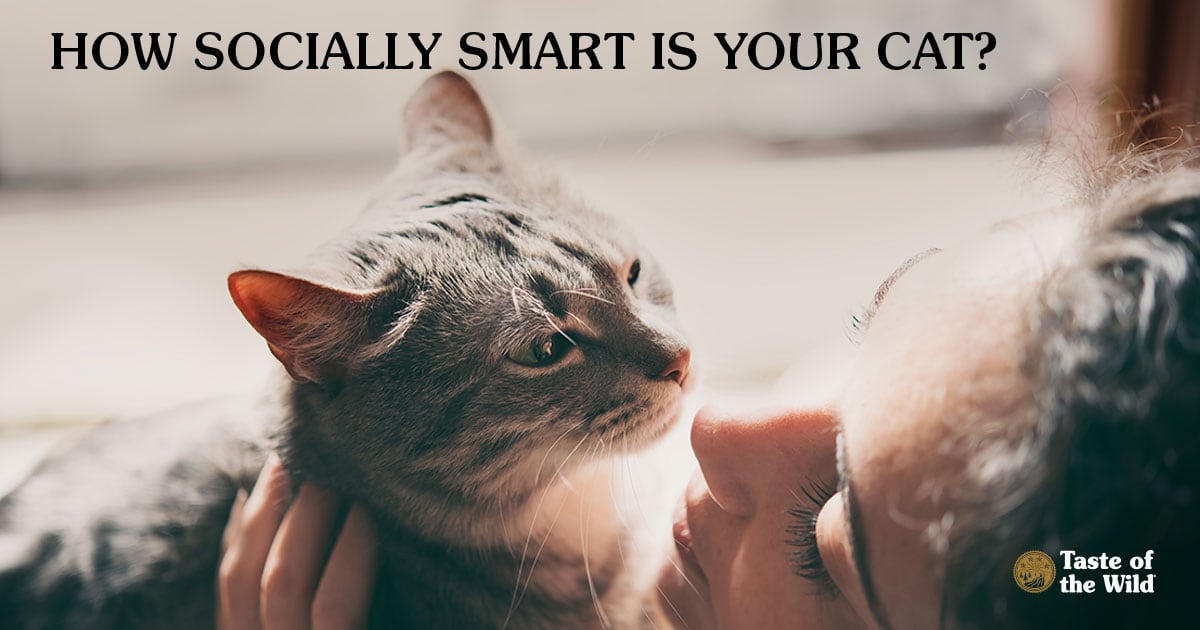
Rightly or wrongly, cats have earned a reputation for being independent and aloof. But does your cat actually pick up on your social cues, and then simply play hard to get? Researchers at the Oregon State University Human-Animal Interaction Laboratory are currently examining cat social skills, or how cats relate to us as human beings. So are cats social animals? Let’s find out.
Can social cats read our intentions better than others?
About two decades ago, research revealed that dogs could, in fact, understand the idea behind human pointing. If two bowls were overturned on the floor, and a human pointed at one of them, the dogs generally approached the bowl the human indicated with their finger. Human toddlers also passed this test, but chimpanzees failed miserably.
Years later, when researchers tested cats in the same way, they found that cats performed as well as dogs, but many simply lost interest and walked away. Cats didn’t seem to have the same drive to please that dogs did, which made them tough research subjects. But now, Kristyn Vitale, a postdoc at OSU, is finding that cats do in fact, understand what pointing means.
Vitale, working with Monique Udell, an animal behaviorist who has studied dogs, wolves and bats, discovered in 2017 that cats prefer to interact with people rather than food and toys. In 2019, they found that cats generally spend more time with people who pay attention to them. Social cats like to be around their people. Who’da thunk it?
Put your cat to the test
How socially “smart” is your cat? Try these simple tests in a quiet room with your cat.
- Does your cat recognize its name? Think of four words that are the same length as your cat’s name and have the same accented syllables. When your cat is calm, say each word out loud, pausing 15 seconds between each one, then say your cat’s name.
If your cats shows diminishing reactions to the words but perks up when you say its name, either by turning its head or ears toward you or moving its tail, there’s a good chance it knows its name. - Is your cat antisocial? Sit in the same room with your cat but focus your attention on something else, like a book or magazine, then call your cat over. If your cat comes when called, reward it with praise and petting — you have one of the social cats. If, however, your cat remains at a distance, it may be more independent. Spending more time interacting with your cat may help an aloof cat become more social over time.
- Can your cat read your emotions? Sit in a room with your cat and bring in an object that might be unsettling to him or her, like a robot vacuum cleaner or fan that makes noise. After a while, move to the object and “pet” it, saying what a nice fan or vacuum cleaner it is in a calm, happy voice.
If your cat is initially scared of the object but eventually calms and even approaches it, your cat can probably tune into your emotional cues and adjust its behavior accordingly. - What comes first for your cat, you or food? Sit on the floor in a room with your cat. Place several treats and toys on the floor around you. Notice where your cat spends most of its time. That’s what your cat prefers. Try this in several locations to make sure your cat isn’t just hungry.
Why study social cognition in cats? Because it helps us interpret how cats interact with us. And better understanding the motivation behind cat behavior can help further cement our bond with social cats and nonsocial cats alike.
RELATED POST: How to Interpret Your Cat’s Behavior: A Taste of the Wild Guide
The information in this blog has been developed with our veterinarian and is designed to help educate pet parents. If you have questions or concerns about your pet's health or nutrition, please talk with your veterinarian.
